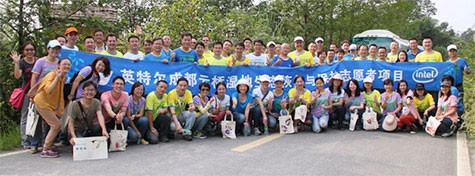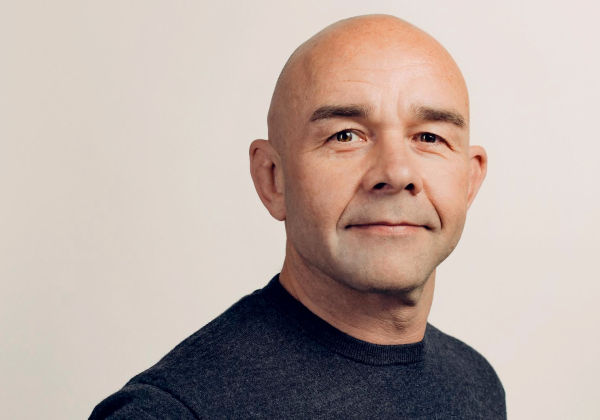A disciplined environment like Intel can be a culture shock for many workers. Incorporating the much-maligned Generation Y worker — commonly portrayed as being overly ambitious, impatient, and lacking loyalty or obedience, making them unproductive and difficult to manage in many working environments — presents yet another potential stumbling block.
As vice president of the Intel Technology and Manufacturing Group and general manager for Intel Products (Chengdu) Ltd. in Chengdu, Sichuan province, China, Cheng Gang Bian has faced up to even greater workforce challenges. China’s one-child policy, though relaxed over the last year, has led to primarily single-children families in China for the last several decades. This has created a group of Gen Y workers in China as well as Chengdu who were brought up, in Bian’s words, as “princes or princesses” that typically haven’t worked in a collaborative environment.
During Bian’s five years at the Intel Chengdu facility, the solution has been to foster a collaborative environment geared to engage the participation of each and every person at his site. His story of leadership and commitment has resulted in unprecedented breakthroughs.
Facing Up to Culture Shock
Bian was no stranger to the issue of culture shock when he first joined Intel. Though born in China, he spent several years studying computer science in Norway, where a typical workday starts at 9:00 a.m. or so, prolonged chats with coworkers and one- or two-hour lunches are commonplace, and leaving early is accepted — far from the discipline-driven culture of Intel, an environment that Bian says he is still learning.
That culture reinforces the understanding that talking a good game without results will place your job in jeopardy. A colleague shared with Bian that he thought the cultural differences would end with Bian leaving the company within six months. But he continues to thrive there 16 years later as a driving force behind the company’s powerhouse manufacturing facility.
Bian initially joined Intel as the Pudong/Shanghai site IT/automation manager in 1998 after leaving Norway to pursue a career in technology management in his hometown. He eventually moved on to Intel’s flash operations, which were eventually spun off as a joint venture in 2007, and joined the Intel Chengdu facility as general manager in 2009.
During that time, Bian has found that Generation Y workers can belie their reputation and be molded into a productive, dynamic workforce. He relies primarily on a group of workers at Chengdu, with an average age of 29 as of 2014, that comprise 90 percent of the facility’s workforce.
The critical element is to understand the Generation Y value system, he says. These workers want someone to understand them and respect their valuation of diversity. Though they are all of the same generation and do have some commonalities, these workers also want management to recognize their individuality. Accordingly, Bian has orchestrated and overseen the redesign of the facility to recognize that individuality. Many of the changes have come as the result of employee suggestions. “Bian demonstrated a key aspect of transformational leadership. That is to create an environment where each and every person can give of their best and flourish. Doing this often requires giving up a point of view or a firmly held belief about how people should think and act,” says Felicity McRobb, Insigniam consultant based in Asia.

In addition, an outside visitor would never know that Intel Chengdu is a factory, which could typically be marked by dirty floors, machines, and overall uniformity. “We changed all of that,” Bian says.
The facility’s cafeteria used to feature only one size of table, with the philosophy of spurring small groups to sit together and promote camaraderie. Bian realized that not all people are comfortable in the same size groups. Now employees can sit at tables suited for two, four, or other small groupings. Similarly, halls no longer feature uniform colors. During free time, workers can choose from an indoor 5-star gym, badminton, basketball, and table tennis; outdoor tennis, soccer, and other physical activities; gardens; and a coffee area.
While some companies discourage fraternization among workers, the Intel Chengdu facility celebrates employee marriages. Pictures of romantic proposals along with brides and grooms are included in some of the company’s internal slide show presentations.
Recognizing the individuality and personal lives of employees goes hand in hand with fostering a strong work ethic. “If you care about their lives and their careers, they will find a workplace that they love and want to contribute,” Bian says. “Gen X leadership needs to change for being able to lead/manage Gen Y, not the other way around,” Bian adds. “But, principles need to be instilled for shaping the Gen Y productivity.”
Those important elements include communication, passion, persistence, patience, and details. “In our experience, the most productive work environments are ones in which people can connect their work to their core values, then the workplace becomes a place of contribution and satisfaction, as well as a place to earn a living,” says McRobb.
Bian communicates regularly with employees through newsletters, meet-the-people sessions, and an anonymous online suggestion box that goes directly to him. He encourages them to make suggestions and ask him questions, all of which he answers no later than two weeks from receipt, despite the complexities that could arise from some of those questions. Employees are also urged to pay attention to details as a means of producing extraordinary results. At a place like Intel, career development can depend on paying attention to small details that differentiate the normal from the extraordinary.
Details also help connect the dots to understand each worker’s contributions, he says. When the site’s current “Chengdu Can Do 3.0” campaign was developed, Bian and other executives realized that they wanted more than just a plan of action, but rather a “big family picture” that would connect all employees. The master plan focused on communicating details that cover all strategies, programs, and actions so that employees could understand how their contributions would aid the facility’s success. The plan included what Bian termed as audacious goals that eventually proved reachable for 2012, when the plant was awarded with Intel’s Quality Award, the most prestigious award doled out by the CEO to a select few qualified organizations across the globe each year.
Workers have responded strongly to Bian’s leadership philosophy and style in both good times and bad. By working together efficiently, Intel Chengdu workers have transformed their workplace into the company’s top facility of its type, producing seven to nine units per second in an operation that runs 24 hours a day and seven days a week. In fact, the facility produces more than half of the world’s mobile chips.
Intel Chengdu has had technical challenges to overcome as well. When a design flaw was discovered in a chipset product at the end of 2010, employees were called back on the first day of Chinese New Year in 2011, which Bian likened to U.S. workers being called back into work on Christmas. Yet employees reported for work and quickly dove into the task of correcting the flaw so that replacement chips could be sent out quickly before even OEMs could have realized it. Failing to do so in the first quarter of the year could have resulted in $1 billion in losses to Intel, according to Bian. The workers discovered and corrected the flaw, allowing replacements to be shipped within six weeks — versus an ordinary plan of at least a quarter-plus — an unheard-of turnaround.
Loyalty is another byproduct of this leadership style. Despite their relatively young age, Chengdu’s average worker has been with the facility for about seven years, in strong contrast to the national average. According to Bian’s observations of China’s market norms, six in 10 Gen Y workers leave their companies in under two years. “It is real work to have people fully engaged in the company’s success, owning successes and failures as their own,” adds McRobb. “Bian’s brand of transformational leadership is clearly paying off, positioning Intel as a workplace of choice and delivering real business value and results. It’s been a pleasure to work with him.”
On another front, Bian is a major advocate of Corporate Social Responsibilities (CSR) into local communities, and his philosophy is one minute of volunteer work equals the same value in hours and days to people in need. Intel Chengdu facility performs an average of 25,000 volunteer hours each year to go along with about a 70 percent participation rate,and they have been honored as the No.1 CSR Company in Sichuan, China, since 2009.
“Our average volunteer hours per employee each year are above 16 hours, while the second awardee in China is at about 20 minutes,” says Bian. “And we never had a goal and gift for volunteers, but a fashionable volunteer t-shirt that a group of Gen Y employees design with colorful ideas every year.” The volunteer spirit is a big part of their culture, as evidenced by the vision statement, “Intel Chengdu–A Source of Pride for Intel, Our Communities, and Our Families.”
Early Setback
Prior to his success at Chengdu, Bian’s role as the managing director for Intel’s flash operations in Shanghai included overseeing some 1,200 employees. A few years after the 2007 spin-off, the market for flash drives started getting soft and Intel made a strategic corporate decision to exit the business. He needed to inform the employees that they were losing their jobs and yet work through the closure of the facility.
“It was very painful and problematic,” he recalls. “I sat at home for three days with a beer in my hand. I thought about it and digested if I were CEO of the company, I would have come to the same decision. It was the right strategy for a sun-setting business.”
So Bian designed a volunteer separation program in which everyone affected listed their preferred timeline for leaving the facility. He chose the last day so that he could try to help other employees find work — if not in other areas within Intel, then attractive jobs outside of the company.
“We wanted a smooth shutdown … ‘Exit with Pride;’ we treated the workers with respect and dignity,” he says. It went so smoothly that workers left with a sense of camaraderie — they still have gatherings to reflect on their times at the flash facility — and Bian was subsequently named general manager of the Intel Chengdu facility.
While Bian’s hope is to have no more such setbacks, he expects to be able to respond quickly if needed. The factory’s motto suggests the future success that Chengdu’s workers and managers continue to pursue: “Connected hearts for the future; Chengdu can do.”



